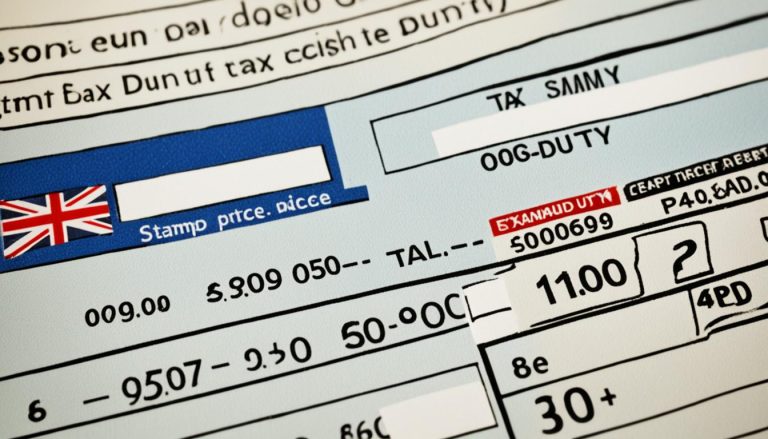Welcome to our comprehensive guide on stamp duty in the UK. If you’re unfamiliar with the concept of stamp duty or need a refresher on the latest updates and rates, you’ve come to the right place! In this article, we will provide a clear and concise explanation of what stamp duty is, how it affects property purchases, and the most up-to-date stamp duty rates.
Whether you’re a first-time buyer or an experienced investor, understanding stamp duty is essential in making informed decisions and avoiding any unexpected costs. Let’s dive in and explore the ins and outs of stamp duty in the UK.
What exactly is stamp duty? In simple terms, stamp duty is a tax imposed on the purchase of properties in the UK. The amount payable is calculated based on the purchase price of the property and falls under the responsibility of the buyer.
The rates of stamp duty are not fixed and can vary depending on several factors, including the property type, whether you are a first-time buyer, and the current government regulations. It’s crucial to stay up-to-date with the latest stamp duty rates and thresholds to understand how they may impact your property purchase.
Throughout this article, we’ll delve into the different stamp duty rates and thresholds, discuss recent changes in stamp duty legislation, and explore exceptions and exemptions that may apply to certain transactions. By the end of this guide, you’ll be equipped with the knowledge needed to navigate stamp duty with confidence.
Ready to delve into the world of stamp duty in the UK? Let’s get started with Section 1, where we’ll provide a detailed explanation of what stamp duty is and how it affects property purchases.
What is Stamp Duty in the UK? – Rates and Thresholds
In this section, we’ll delve into the different stamp duty rates and thresholds in the UK. Stamp duty is a significant consideration when purchasing a property, so it’s crucial to understand how the rates and thresholds operate.
Stamp duty rates vary depending on the value of the property being purchased. The rates are progressive, meaning that different portions of the property’s value fall into different tax bands. This progressive system ensures that higher-value properties incur higher tax amounts.
The current stamp duty rates, as of 2021, are as follows:
| Property Value | Stamp Duty Rate |
|---|---|
| Up to £125,000 | 0% |
| £125,001 – £250,000 | 2% |
| £250,001 – £925,000 | 5% |
| £925,001 – £1.5 million | 10% |
| Over £1.5 million | 12% |
It’s important to note that stamp duty rates and thresholds may be subject to change based on government policies, so it’s always advisable to consult the latest information when considering a property purchase.
Furthermore, first-time homebuyers may benefit from additional stamp duty relief, with higher thresholds and reduced rates. These relief measures aim to support individuals getting onto the property ladder for the first time.
Understanding stamp duty rates and thresholds is essential to make informed decisions when buying a property. It enables you to calculate the tax liability accurately and budget accordingly.
Now that we have covered the stamp duty rates and thresholds, let’s explore the various exceptions and exemptions that exist in relation to stamp duty.
Stamp Duty Exceptions and Exemptions
In this section, we’ll explore the various exceptions and exemptions that exist in relation to stamp duty. Stamp duty can be a significant expense when purchasing a property, but there are circumstances where you may be eligible for a reduced rate or exempt from paying stamp duty altogether.
Stamp duty exceptions refer to specific situations where you may qualify for a reduced rate. These exceptions are designed to provide relief for certain types of property transactions or buyers. Let’s take a look at some common stamp duty exceptions:
- First-Time Buyers: If you’re buying your first property, you may be eligible for a lower rate of stamp duty. The government offers a first-time buyer exemption, allowing you to save money on your property purchase.
- Shared Ownership: If you’re purchasing a shared ownership property, you may be eligible for a reduced stamp duty rate. This can help make homeownership more accessible, especially for those with lower incomes.
- Transfer of Property in Divorce: In the event of a divorce or separation, if a property is transferred between partners, no stamp duty may be payable. This exemption aims to ease the financial burden during what can be a difficult time.
In addition to exceptions, there are also stamp duty exemptions where no stamp duty is payable at all. These exemptions apply in certain situations and can help save you a significant amount of money. Here are some common stamp duty exemptions:
- Property Gifts: If you receive a property as a gift or inheritance, you may be exempt from paying stamp duty. This exemption recognizes that no monetary transaction is involved in these cases.
- Charitable Donations: If you’re transferring property to a charity, you may be exempt from stamp duty. This encourages philanthropy and supports charitable causes.
Stamp Duty Exemptions Table
| Stamp Duty Exemptions | Description |
|---|---|
| First-Time Buyers | Reduced stamp duty rates for individuals purchasing their first property. |
| Shared Ownership | Reduced stamp duty rates for individuals buying a shared ownership property. |
| Transfer of Property in Divorce | No stamp duty payable when a property is transferred between partners due to divorce or separation. |
| Property Gifts | No stamp duty payable when receiving a property as a gift or inheritance. |
| Charitable Donations | No stamp duty payable when transferring property to a charity. |
By understanding the various exceptions and exemptions available, you can potentially save money on your stamp duty expenses. It’s important to consult with a professional, such as a solicitor or tax advisor, to determine your eligibility and ensure compliance with the necessary requirements.

Conclusion
In conclusion, understanding stamp duty is essential for anyone navigating the property market in the UK. We have explored the ins and outs of this tax, discussing what it is, how it affects property purchases, and the latest stamp duty rates and thresholds.
By now, you should have a clear understanding of stamp duty and its implications. Armed with this knowledge, you can make informed decisions when it comes to property purchases, ensuring you are aware of the tax liabilities and any exemptions or exceptions that may apply.
Remember, stamp duty rates can change over time, so it’s important to stay updated on any recent changes that may impact your purchasing decisions. Whether you’re a first-time buyer or a seasoned investor, having a solid grasp of stamp duty will empower you to navigate this tax successfully.
We hope this article has provided you with valuable insights into the world of stamp duty. Now you can approach the property market with confidence, equipped with the knowledge you need to make informed decisions and avoid any surprises along the way.






